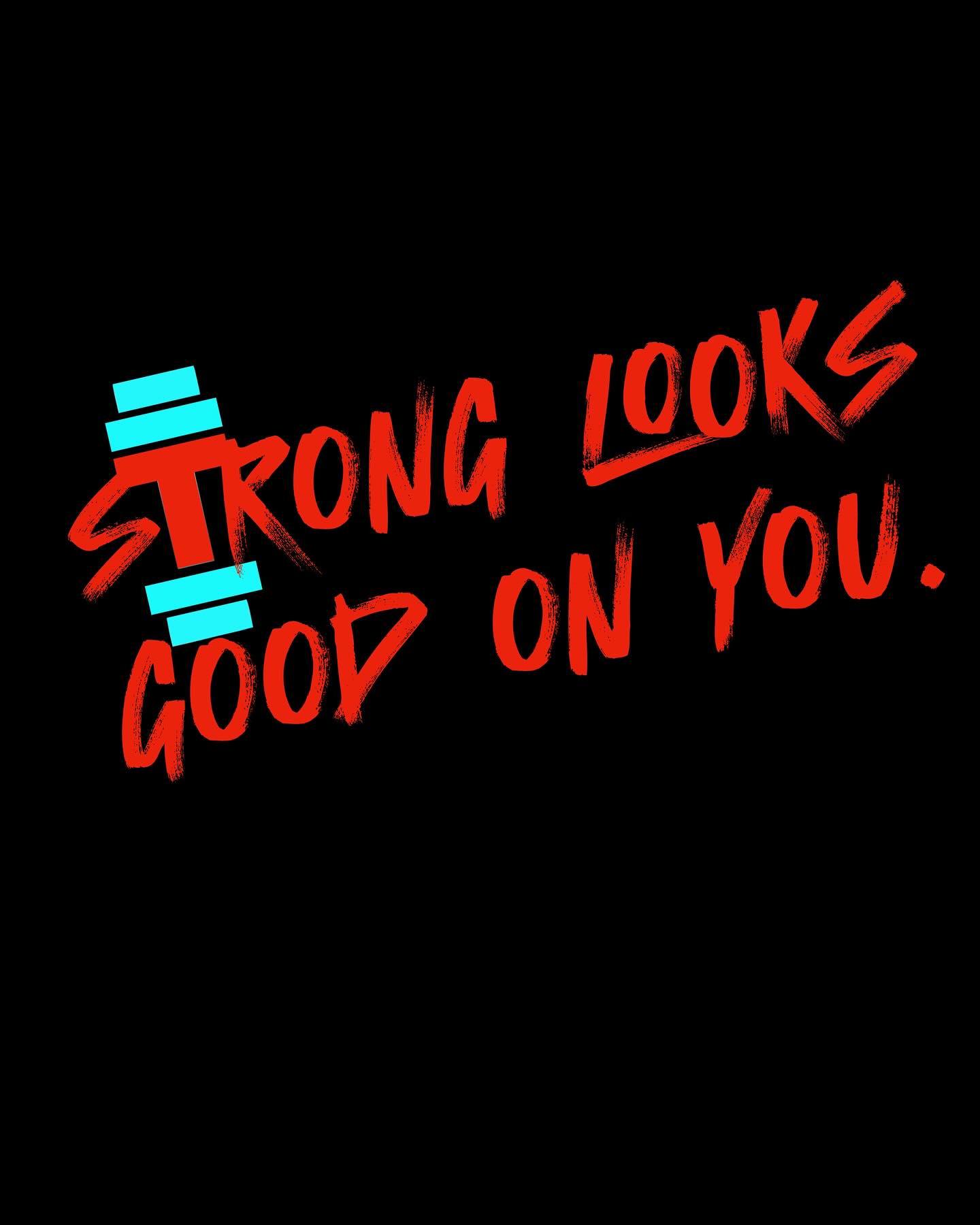Redefining Strength: Using Inclusive Language and Environments in the Gym
By Justine Tapp, OTR/L, CPT, CNC
Tapp Into It Fitness
Why Words Matter in the Gym
The gym is supposed to be a place where people come to feel stronger — not smaller. Yet for many people, especially those who are BIPOC, LGBTQ+, neurodivergent, or in larger bodies, the language often used in fitness spaces can create barriers rather than belonging.
Phrases like “no pain, no gain”, “beast mode”, or “earn your carbs” might sound harmless to some, but to others they can reinforce shame, disconnection, or a sense that they don’t belong in that environment.
Trauma-informed fitness asks us to look deeper — not just at how we program, but how we speak.
Language shapes safety. When we shift our tone from one of domination to one of empowerment, we create a space where all bodies, identities, and experiences can thrive.
What Trauma-Informed Language Looks Like
Inclusive, trauma-informed language is:
- Collaborative rather than commanding.
- Curious rather than judgmental.
- Empowering rather than shaming.
- Body-neutral rather than body-focused.
It’s not about watering things down — it’s about creating psychological safety, where clients and members feel seen and respected as they are.
Learning Through Awareness: Inclusive Language and Pronouns
One of the most meaningful moments in my growth as a trainer came from a simple, honest conversation.
A class participant — a director involved with The Trevor Project — kindly asked if I was open to feedback. She pointed out how often I used the word “guys” when addressing my classes. What seemed small to me at first clicked quickly: language like that can unintentionally make people feel unseen or excluded.
Since then, I’ve made a conscious shift to use “team” instead. It took time, mindfulness, and a few slips along the way, but it’s now second nature. That experience reminded me how inclusion often starts with small adjustments — and how openness to correction is part of the work. I’m still grateful to her for helping me see that.
Words We Can Rethink in the Gym
| ❌ Common Phrase | 💭 Why It Can Exclude or Harm | ✅ More Inclusive Alternative |
|---|---|---|
| “Go beast mode!” | Implies aggression and a narrow, masculine view of effort. | “Find your power.” / “Channel your strength.” |
| “No pain, no gain.” | Ignores the body’s cues and can trigger those with trauma or injury. | “Listen to your body.” / “Challenge yourself, but honor your limits.” |
| “Work off the weekend!” | Links exercise to punishment and food guilt. | “Move because it feels good to move.” |
| “Man up.” / “Don’t be a girl.” | Reinforces gender stereotypes and excludes nonbinary folks. | “You’ve got this.” / “Let’s stay with it.” |
| “Beach body ready!” | Implies some bodies are more acceptable than others. | “Strong looks different on everyone.” |
| “You'd look better if...” | Suggests something is broken or wrong. | “Let’s support your body in feeling strong and capable.” |
| “You’re not working hard enough.” | Shames rather than motivates. | “What’s your effort feel like on a scale of 1–10?” / “Let’s see if we can find another gear.” |
| “Drop and give me 20!” | Command-based, military tone can feel unsafe for trauma survivors. | “When you’re ready, let’s hit 20 reps together.” |
| “You can rest when you're dead.” | Reinforces the idea that rest isn’t deserved. | “Rest is part of the work.” |
| “Shred the fat.” | Objectifies and pathologizes body fat. | “Let’s build strength and mobility.” |

Beyond Words: Creating Physical Safety in the Gym
Language is one piece of the puzzle, but our environment speaks, too.
During my Trauma-Informed Weight Lifting coursework, I started noticing small details that once felt insignificant but now stand out clearly. One moment that hit me hardest came while leading my Mind Body Strength class:
I had clients performing deadlifts facing the large front windows of our gym. I hadn’t thought much of it before — the lighting was good, the space was open — but when I stepped back and looked through a trauma-informed lens, I realized how exposed that position was.
For someone who has experienced assault, harassment, or body-based trauma, having their back to the room — or being on display to anyone passing by — can trigger deep discomfort, even if it’s subconscious.
These aren’t just logistical considerations. They’re part of psychological safety — the foundation of trauma-informed movement.
Environmental & Positional Awareness: Reimagining Setup
| ❌ Common Setup or Habit | 💭 Why It May Feel Unsafe or Exclusionary | ✅ More Trauma-Informed Alternative |
|---|---|---|
| Facing mirrors or windows during lifts | Mirrors and windows create hyper-visibility and self-consciousness; can feel like being watched or judged. | Allow clients to face a wall or neutral area; ask, “Where would you feel most comfortable lifting?” |
| Trainers standing directly behind clients during movements (e.g., squats, RDLs) | Being approached from behind can feel threatening or triggering. | Stand at a diagonal angle or side position where clients can see you. Ask permission before adjusting position. |
| Loud, sudden cues (“Let’s go!” yelled from behind) | Startling or re-traumatizing for those sensitive to abrupt noise. | Approach from the front, use calm tone, and gain eye contact before cueing. |
| Crowded, high-traffic areas during sessions | Overstimulation, sensory overload, or risk of unwanted proximity. | Choose a quieter corner or time of day with less foot traffic. |
| Dimly lit or overly bright spaces | Low lighting can feel unsafe; harsh lighting can heighten anxiety. | Balance lighting; use natural or soft light when possible. |
| Public weigh-ins, “before/after” photos, or visible progress charts | Can trigger shame, comparison, or dysphoria. | Focus on strength logs, confidence check-ins, or mobility milestones. |
| Sharing equipment without checking comfort level | Touching shared surfaces may cause anxiety or discomfort for some. | Offer wipes, personal towels, or the choice to bring one’s own gear. |
What I Learned
That deadlift setup moment was humbling. It reminded me that inclusion is in the details.
Trauma-informed trainers don’t just program workouts — we design environments where bodies can show up without fear.Sometimes it’s as simple as asking, “Do you feel comfortable facing this way?”
That one question can change someone’s entire experience.
Walking the Talk: What This Looks Like in Practice
As I started integrate trauma-informed principles into my coaching, I realized how many “standard” fitness practices can unintentionally harm the very people we’re trying to help.
One big shift for me came in rethinking how progress is celebrated.
I’ve never felt comfortable using weigh-ins or before/after photos as the centerpiece of a client’s transformation.
Those images tell only one part of the story, and too often they reinforce a narrow idea of success that centers aesthetics over growth.
If you scroll through my feed, the only “transformation” photo I’ve ever shared is one of myself — because that’s my body, my story, and my consent.*
I have clients who’ve accomplished incredible things — physically, mentally, and emotionally — but it’s not my body to display.
It’s not my story to tell for likes or proof. As a trauma-informed coach, I’m not the hero of anyone’s journey. I’m the guide, helping them feel safe enough to step into their own power and "tapp into their full potential." It's been part of my motto since the beginning when I created my business Tapp Into It Fitness; Passion. Potential. Purpose.

Redefining Transformation: From Appearance to Alignment
This same awareness shaped the structure of my 8-Week Transformation Challenges through Tapp Into It Fitness.
Early on, I decided my programs wouldn’t reward body weight or body fat percentage lost. That kind of competition, even with good intentions, can reinforce shame and comparison — two of the biggest barriers to healing our relationship with movement.
Instead, my challenge prizes celebrate consistency, connection, and care.
- Hydration consistency — honoring how small habits support recovery and mental clarity.
- Protein tracking — fueling our bodies instead of depriving them.
- Sleep quality — recognizing rest as strength, not weakness.
- Step goals — encouraging movement that fits into real life.
- Accountability partnerships — nurturing community over competition.
- Mindset and reflection awards — because growth isn’t just physical; it’s emotional.
Each of these categories focuses on the process, not just the outcome.
Over time, I’ve watched participants gain not just strength — but self-trust. They stop chasing perfection and start noticing progress in their energy, their confidence, and their joy.
Building Belonging: Representation and Culture in the Gym
Trauma-informed work doesn’t stop with language or positioning. It’s about culture — the feeling people get when they walk through your doors, scroll your feed, or join one of your programs.
Representation isn’t just a buzzword; it’s a mirror. When people see someone who looks like them, identifies like them, or simply makes space for them, they feel permission to exist fully.
As a queer trainer in the fitness industry, I didn’t always recognize how rare that visibility was until I started training at larger events and realized — more often than not — I was the only queer person there. For a long time, I didn’t think of my inclusivity as a “niche.” It was just who I was and how I trained.
But over time, I’ve realized: that’s exactly what makes it special.
It’s why so many of my clients tell me this is the first gym space where they’ve felt safe, affirmed, and seen.
Belonging doesn’t happen by accident — it’s built, intentionally, through every cue, conversation, and policy.
Creating a Culture of Belonging
| 💭 What Often Happens | ✅ How We Can Reimagine It |
|---|---|
| Marketing that features only one type of body (thin, white, cisgender, able-bodied) | Include diverse bodies, races, genders, ages, and ability levels in marketing and social media. Representation builds safety before a client ever steps foot inside. |
| Gendered language (“Ladies’ weights,” “Men’s area”) | Use gender-neutral language: “strength area,” “power zone,” or simply “free weights.” |
| Ignoring pronouns or making assumptions about identity | Normalize introductions that include pronouns and mirror the client’s language about themselves. |
| Music or locker room banter that reinforces stereotypes | Choose playlists and community language that empower rather than objectify. |
| Trainers who avoid hard conversations around inclusion | Lead by example. Be willing to listen, to be corrected, and to grow publicly. It builds trust. |
From Gym Culture to Healing Culture
When we start viewing the gym not just as a place for performance but as a place for healing, everything changes.
It becomes a space where:
- People learn that rest doesn’t equal failure.
- Strength is measured in recovery as much as in reps.
- Every identity, body type, and background belongs in the narrative of fitness.
This is the culture I want to help grow — one that meets people where they are and reminds them that they don’t have to become someone else to be strong.
Closing Reflection
Trauma-informed is choosing words that honor, spaces that protect, and metrics that empower.
It’s acknowledging that everyone walks into the gym carrying a story, and the way we respond determines whether that story grows heavier or begins to heal.
When we get this right, the gym becomes more than a place to lift weights.
It becomes a place to lift each other.
Resource Box
- Trauma-Informed Weight Lifting Project: traumainformedweightlifting.com
- Book: The Body Is Not an Apology by Sonya Renee Taylor
- Book: The Body Keeps the Score by Bessel van der Kolk
- Follow: @traumainformedweightlifting | @tappjustine


